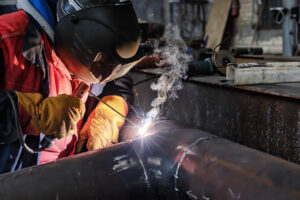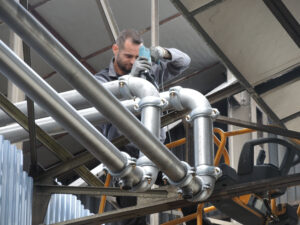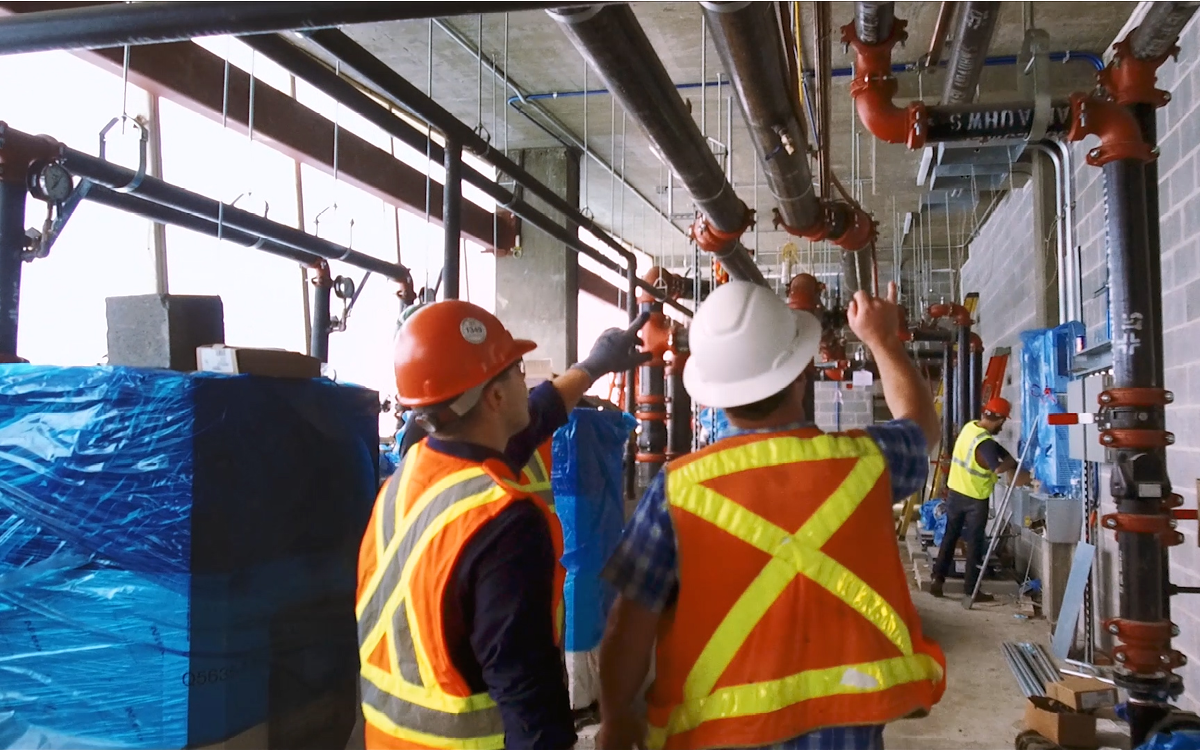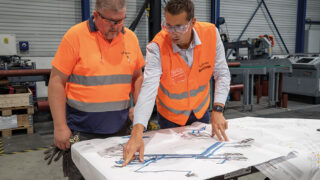View this blog in another language:
Danish Finnish French German Norwegian Swedish
Posted on May 7th, 2024
In part 2 of our Circularity in Construction series, we touched on how selecting low-impact materials from the start and working with BIM, fabrication and modularization can contribute to your project’s sustainability goals. Let’s now move on to another part of what makes a product circular: the impact of use and installation.
A piping system’s method of construction can significantly impact a project’s ability to achieve its schedule goals, and it can also directly impact safety and sustainability. The speed and ease that characterize grooved piping systems also make them inherently safer to use and install over heat or flame-based joining methods such as welding, fusing, soldering or brazing. Simply put, there are faster and safer ways to construct piping systems that also reduce environmental impact and we will explore that in more detail below.
Environmental impact of welding v. grooved pipe joining
Welding and associated operations generate hazardous emissions, like hazardous air pollutants (HAPs) and metal fumes. Besides airborne pollutants, it is a process that also generates solid waste, like contaminated rods, wire stubs, wire spools, and slag and debris, most of which goes straight to landfill.

In some cases, usually on stainless steel pipe, the welding process also requires surface preparation, for which solvents and nitric and hydrofluoric acids are used to pickle and passivate the pipe to remove weld heat tinted layers. These processes also require proper disposal of waste solvents, solvent-soaked rags or tools and wastewater in waste drums.
In comparison, mechanical pipe joining is safer and generates less waste. No flames, no fumes, no particulates, no contaminated waste, and no energy required for installation. And being a significantly faster installation process, it also translates to fewer man-hours and less exposure to risk.

From a waste perspective, grooved pipe joining is the clear choice. Grooved joints, whether used on metallic or non-metallic pipe, eliminate environmentally hazardous emissions and waste otherwise generated by welding, brazing, soldering, using solvent cement, or fusing pipe joints. What’s more, working with grooved doesn’t expose your pipefitters to the damaging fumes currently cited as the cause of serious health issues in a series of lawsuits.
Consider, for instance, a project to construct a production facility with 2,500 linear feet of 4” schedule 40 carbon steel pipe and 915 pipe joints. Based on an average of nine welding rods per joint plus 1.32 gal./hr. diesel fuel consumption and a 22.4 lbs./gal. emission coefficient, switching to mechanical pipe joining would eliminate 8,235 spent welding rods in waste and prevent nearly 65,000 pounds of CO2 emissions.
Reducing mistake-generated waste
While BIM and prefabrication are great tools to leverage in the design stage to make on-site installation more predictable and avoid any last-minute reworks on the jobsite, unfortunately, line-up issues and mistakes do happen on sites. Some are easy to fix, others are more worrisome, and generate additional waste that could have been avoided. A bad or incorrect weld isn’t a quick fix. At a minimum the weld must be cut out and tossed, along with the welded fitting. And if it’s a poorly positioned valve, those flanges get tossed as well.
Where welding offers limited adjustment opportunities, a grooved system can easily be adjusted because it allows easy access to the system. That means that mistakes can easily and quickly be corrected without cutting out errant pipe sections and producing waste. Even if your grooved connection isn’t right from the start, you can easily disassemble your coupling again and reuse the same one to give it another try. Nothing that needs to be tossed out, nothing that needs to be replaced. No waste.
With Victaulic, you get a connection as reliable as a weld with none of the downside. Your workers get the job done correctly and quickly. And you make the jobsite a valuable contributor to meeting your sustainability goals.
Watch for our next installment in our Circularity in Construction series, where we’ll look at circularity during a building’s lifetime — and at the end of it.
Learn more about the sustainable advantages of Victaulic’s grooved pipe joining solutions in our Sustainability Report or get in touch with our experts to see how we can help you achieve your next project’s sustainability goals.



